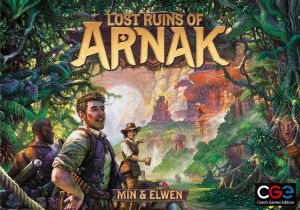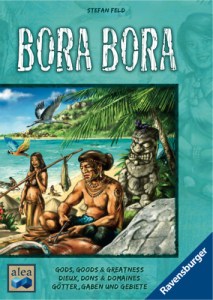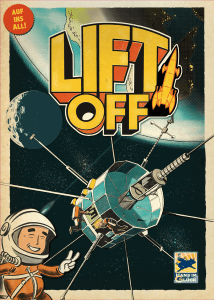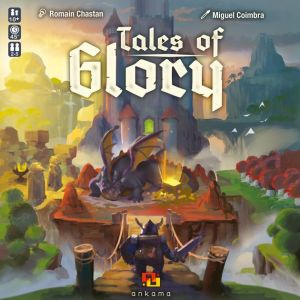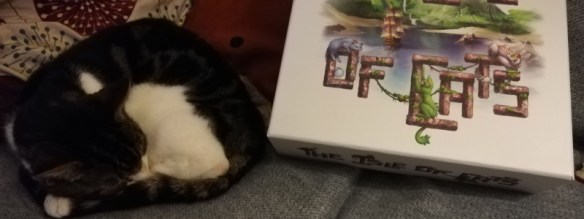Welcome to my best board games 2021 list. This isn’t a list of the best games to come out this year. Frankly, those lists tend to be ridiculous at this stage. Its too soon in the year. Instead this is my favourite games of all time, as of May 2021. Some were released as recently as 2019/2020. But this list is largely about standing the test of time.
This post follows on from my last, which covered my favourite games numbered 40-21. And it will be followed in a few days by a nerdy stats post, looking at things such as play numbers, what went in and out of the list etc. I do posts like this every May. If you want some historical context, head to my Top 10 lists page for posts going right back to 2013.
All the links below go to full board game reviews elsewhere on this website. If you want to purchase any of these games, please support the site by starting your search by clicking this link to comparison site Board Game Prices. And if any are available to play free online, I’ll list the sites/sites below the game title (either BGA, Yucata and Boite a Jeux).
Best board games 2021: 20-11
20: Ingenious
(Released in 2004, for 2-4 players, lasting 40-60 mins - designed by Reina Knizia)
Ingenious is the game that started my collection when I got back into the hobby in 2008. Its a largely tactical tile-laying game that takes five minutes to teach. But it has a glorious tipping point about half way where you go from accumulating points to protecting your position and winning the game. Ingenious indeed.
19: Fertility
(2018, 2-4 players, 40-60 mins - Cyrille Leroy)
More tile-laying, but with added resource collection to trigger scoring. What I especially like is the tight shared board, where you have to be incredibly careful not to give away great opportunities. While you’re also trying to maximise your own board to score points in a variety of ways. A great mix of tactical/strategic and competitive/heads-down all at once.
18: Targi
(2012, 2 players, 60 mins - Andreas Steiger)
Online: BGA & Yucata
A small box worker placement game for two-players. A tight action grid and resource list mean you’re always competing hard for spaces. But there’s enough variety to make every game feel different. And to allow for different strategies. When you add in the 2016 expansion pack, this has become my highest rated two player-only game.
17: Lost Ruins of Arnak
(2020, 2-4 players, 1-2 hours - Min & Elwen)
Online: BGA
The ‘highest new entry’ for 2021. And I do worry that, without an expansion, it may run out of steam before next year’s best board games list. But right now, I’m really enjoying it. Light deck-building meets worker placement and set collection. Taking risks can lead to big rewards, or you can take it slow and steady. Plus it has great components and smooth rules.
16: Macao
(2009, 2-4 players, 90-120 mins - Stefan Feld)
Online: Yucata
My first proper euro game purchase, back in 2010. Which may keep it artificially high on the list. But I do still love it. Roll dice and collect cubes to collect specialists and fulfil orders. Sure, even the slightest risk can be thwarted by bad luck with the dice. But there’s something hugely satisfying about it when everything comes together.
From 15-11
15: Ra
(1999, 2-5 players, 60 mins - Reina Knizia)
Knizia is one of only two designers to have two games in my Top 20 (after Ingenious). But this is as high as he goes - although Ra has been as high as number two in my list in the past. It’s a brilliant bidding game, a genre I’m not mad keen on. Bu this adds push your luck, an Egyptian theme and set collection. Making every decision meaningful and interactive.
14: Downfall of Pompeii
(2004, 2-4 players, 45-60 mins - Klaus-Jurgen Wrede)
Online: Yucata
Once my number three, Pompeii is still one of my favourite family games. It is essentially two games in one, pivoting from tactical placement to tile laying and a movement/race game at halfway. And it mercilessly mean, but in a way that still brings any player along for the ride. Simply great fun. And still very high in my ratings, despite countless plays.
13: Can’t Stop
(1980, 2-4 players, 30 mins - Sid Sackson)
Online: BGA
So, three games in a row that are at least 18 year’s-old and have been in the Top 20 in all my eight annual Top 40s. New games shmoo-games. Can’t Stop is basic probability, turned into a push-your-luck dice game. The rules are incredibly simple. But you’ll struggle to find a gamer that doesn’t love it. A fitting tribute to one of the hobby’s great designers (RIP).
12: Azul
(2017, 2-4 players, 45 mins - Michael Kiesling)
Azul is my highest ranked board game of the last five years. Its a gorgeous abstract with light rules and tactile Bakelite pieces. But behind its pretty façade lies a tactically viscous set collection gem. It has quickly established itself as one of the biggest hits in the hobby and rightly so. A modern day must-have in any collection.
11: Kingdom Builder
(2011, 2-4 players, 45 mins - Donald X Vaccarino)
Online: BGA
Kingdom Builder has pogoed around, in and out of my Top 40 over the years. Fitting for what has proven to be quite the Marmite game. But this is its highest ever placing here. Again, simplicity is the byword. It turns a couple of game conventions on their heads, hence splitting opinion. But adapt and you’ll find a clever and varied tactical placement game.
Best board games 2021: The Top 10
10: Concordia
(2013, 2-5 players, 90 mins - Mac Gerdts)
Online: BaJ
Gerdts’ second game on the list is another Top 20 ever-present and a game I never get bored of playing. It comprises everything I love in a euro game, from light deck-building through resource management to non-direct interaction. But despite being thinky and tough to play well, the rules are clear and elegant while the turns are short and snappy. Plus, a series of smart expansions really help replayability.
9: Deus
(2014, 2-4 players, 90 mins - Sebastien Dujardin)
Online: BaJ
While generally well regarded, I’m surprised Deus didn’t get the plaudits it deserved. This clever euro does something original with a card tableau, which is refreshing. You play cards in five colours, but each you lay of the same colour triggers ones you laid before. Throw in a race feel, board position jostling and some screwage, and you have a real winner.
8: Caverna
(2013, 2-4 players, 2-3 hours - Uwe Rosenberg)
Spoiler alert: You’re not going to find Agricola higher on my list. While I do enjoy it, I prefer the openness Caverna brings to Rosenberg’s worker placement style. Rather than front-loading the decisions via card draft, here you can make decisions on the fly as you build up your tableau. Sure, it’s less tense. But for me the experience is more satisfying.
7: Bora Bora
(2013, 2-4 players, 90 mins - Stefan Feld)
I’m not sure what was in the German water in 2013, but this is the third German euro from that year in my Top 10. This is another oft overlooked design, which is strange. Feld is a popular designer, it’s bright and colourful, and has a clever and interactive dice mechanism for action selection. It’s one of his heavier games, but for me clearly one of his best.
6: Ticket to Ride
(2004, 2-5 players, 60 mins - Alan Moon)
Online: Steam, app stores (Google/Apple)
This classic family game has been an ever-present in my top 10 (top six, in fact). At nearly 200 real-life plays it is comfortably my second most played game. And I introduce it to at least one or two new gamers every year. Collect cards, use them to build routes, and hopefully get in the way of your opponents. Add in expansions, and you’ll be playing forever.
The Top 5
5: Terra Mystica
(2012, 2-5 players, 2-3 hours - Drogemuller & Ostertag)
Online: BGA, Yucata
Terra Mystica is the most complex game on my list. But it’s testament to its quality that it doesn’t feel like it. It has a civ feel, as you manage your economy and build your territory. But the fantasy theme works, binding the various currencies into a coherent whole. It’s deep, strategic and original, while also tactical, smooth and familiar. Another Top 10 ever-present.
4: Thurn and Taxis
(2006, 2-4 players, 60 mins - Karen & Andreas Seyfarth)
Online: BGA, Yucata
It’s not easy taking the ‘top family game’ crown from Ticket to Ride. But Thurn and Taxis did it on my list three years ago and hasn’t looked back. I still recommend TtR above it. But Thurn has the edge for me personally. It has the same route building/set collection vibe. But there’s just a bit more to it in every department for a gamer. Except it’s a bit more beige…
3: Terraforming Mars
(2016, 1-5 players, 2-3 hours - Jacob Fryxelius)
Online: Steam, app stores (Google/Apple)
Terraforming Mars is nerdy sci-fi gamer nirvana. But it’s also a fantastic tableau building euro any gamer can appreciate. On the surface, it can look like a mess of cards and tiles straight from a teenager’s notepad. But somehow it all comes together perfectly. The tight economy forces tough decisions and the card combos can be hugely satisfying.
2: Oracle of Delphi
(2016, 2-4 players, 90 mins - Stefan Feld)
Online: Yucata
Its unusual for a game to go straight into my Top 10. But Delphi did it five years ago and has been at my number two spot now for three. In some ways it is a typical Stefan Feld euro. A simple but clever dice-powered action selection mechanism, some point salad, and a dollop of luck. But this time it’s a race and it works beautifully. An underappreciated gem.
Best board games 2021: And the winner is…
1: Race for the Galaxy
(2007, 2-4 players, 60 mins - Tom Lehmann)
Online: BGA, Steam, app stores (Google/Apple)
When I started this list back in 2014, Race for the Galaxy had already been my favourite game for two years. And despite nearly 300 plays on the table, plus many more online, nothing has changed. It manages to pack a genuinely thinky and satisfying tableau building game into 30 minutes. Sure, there’s luck of the draw. But if you get bad luck, just go again. You only need to shuffle a deck of cards.
Sure, Race for the Galaxy does have a bit of a learning cliff for new players. The iconography can be baffling at first, despite the game’s relatively simple rule set. But once you get to grips with it, you realise it does need to be the way it is. And suddenly, like seeing the matrix, it all comes together. Expansions have added a ton of replayability over the years too. But the base game alone is a true gem. Will it ever be beaten?
Check out last week’s post for numbers 21-40 in my ‘Best board games 2021’ list. While my next post will be a nerdy stats post about this year’s and previous lists. After which, normal review service will be resumed (Mariposas and Mandala Stones reviews coming soon).

